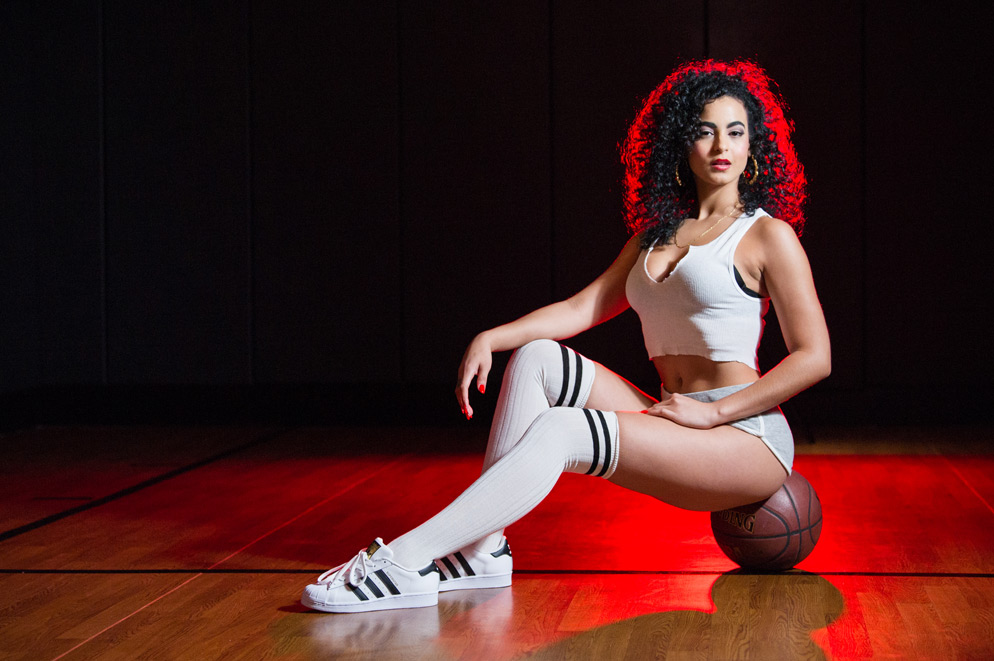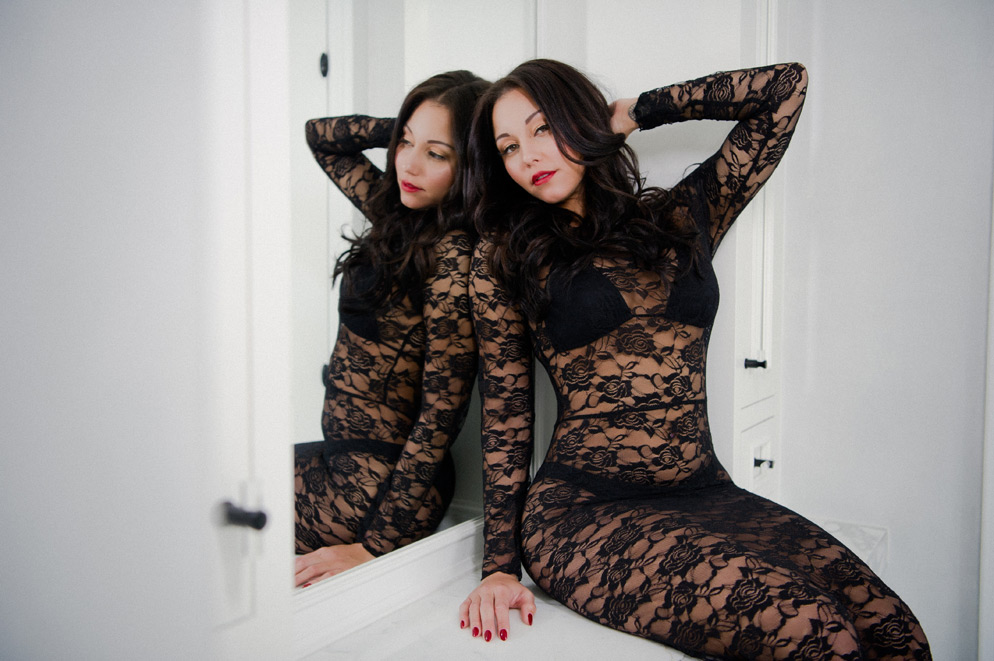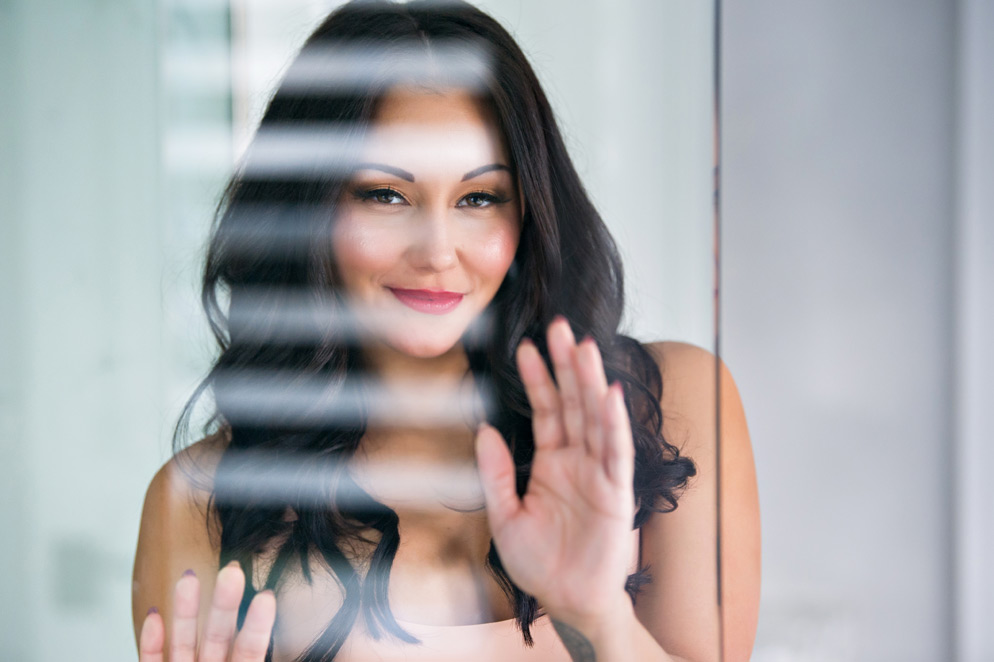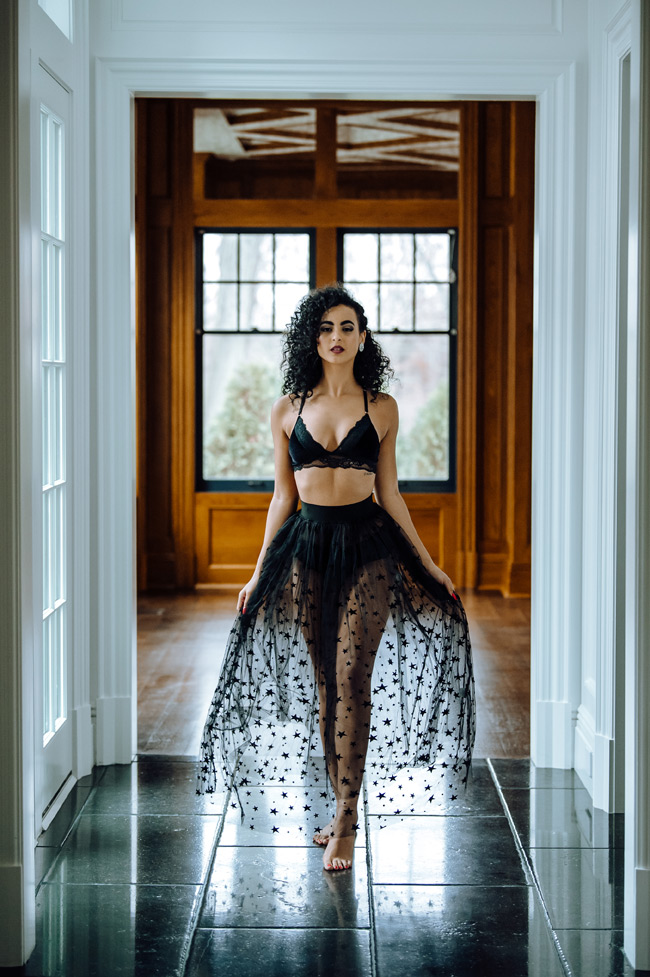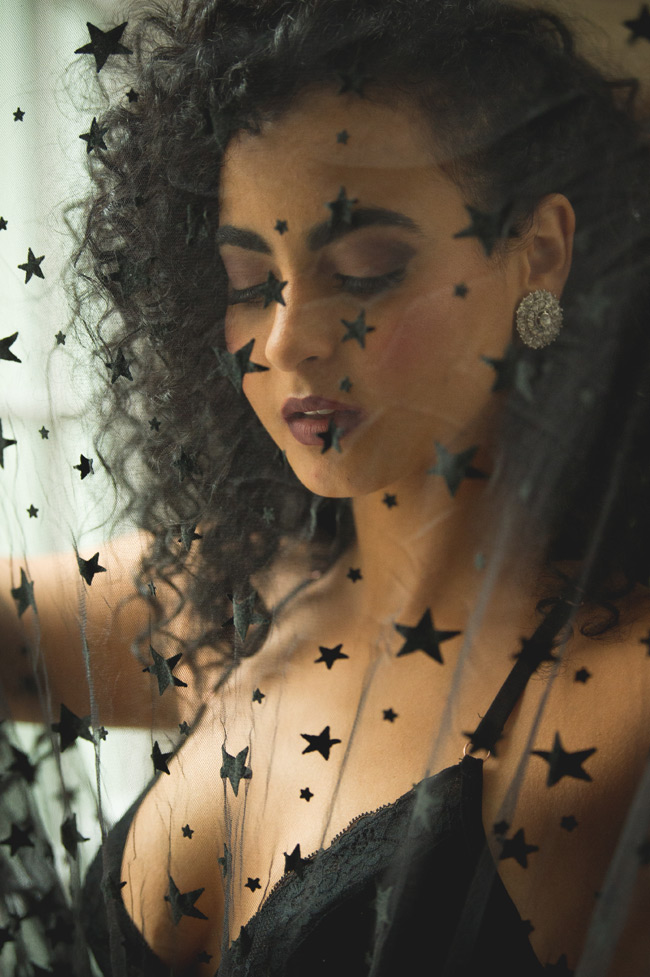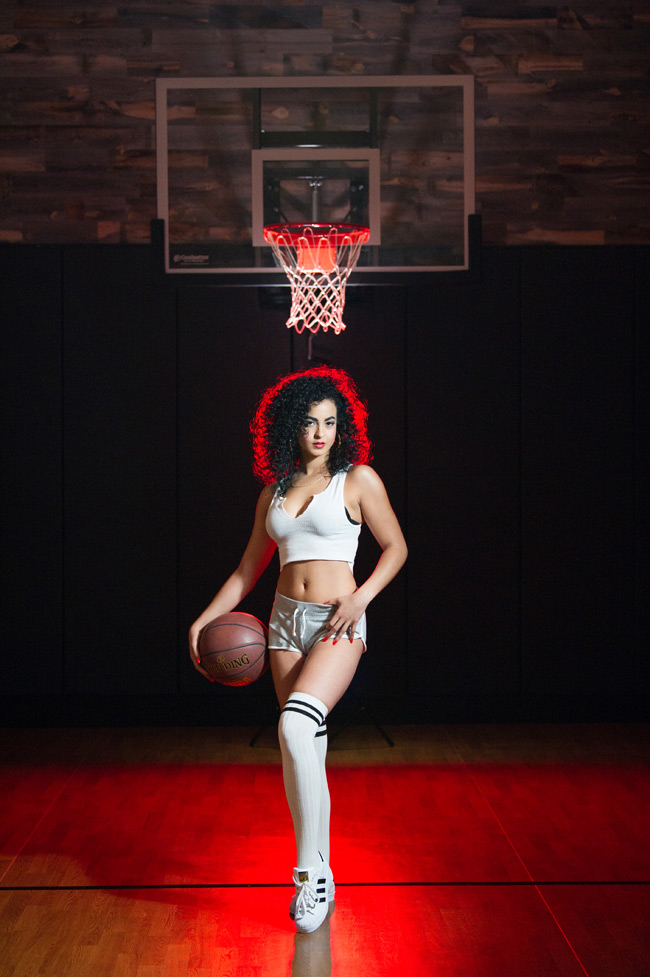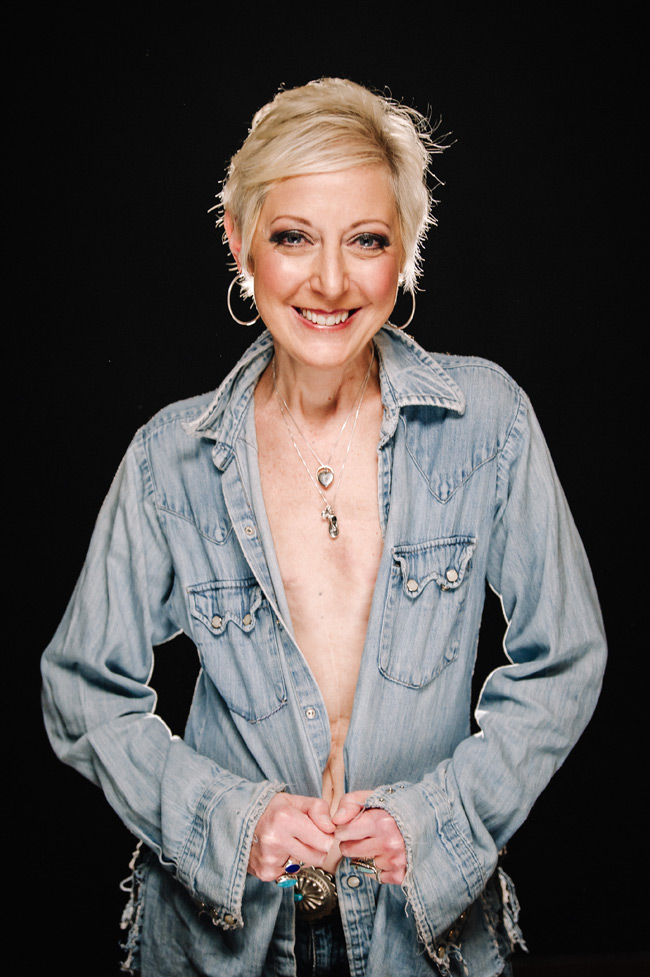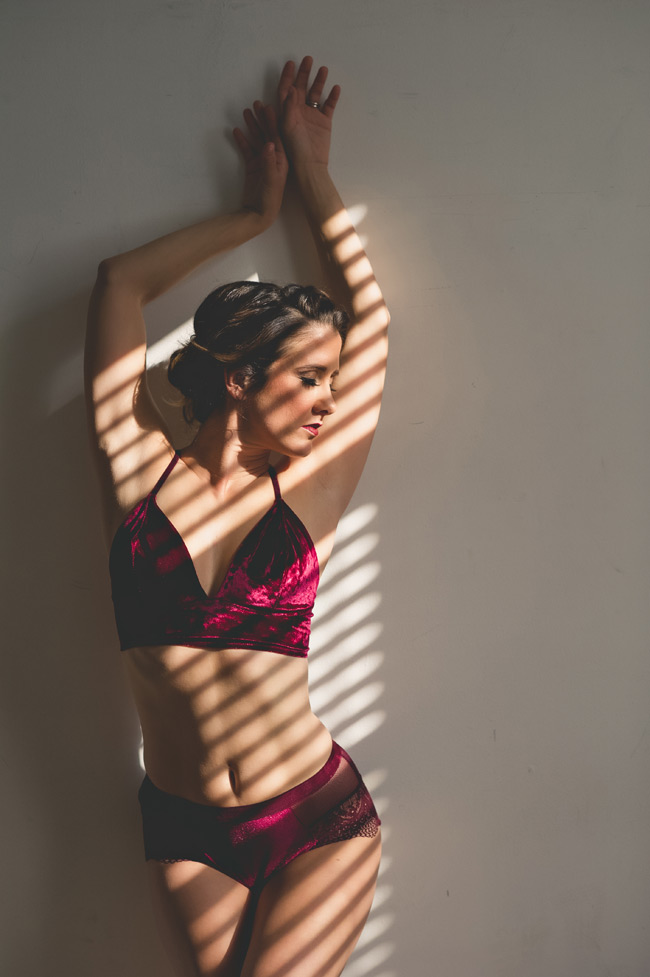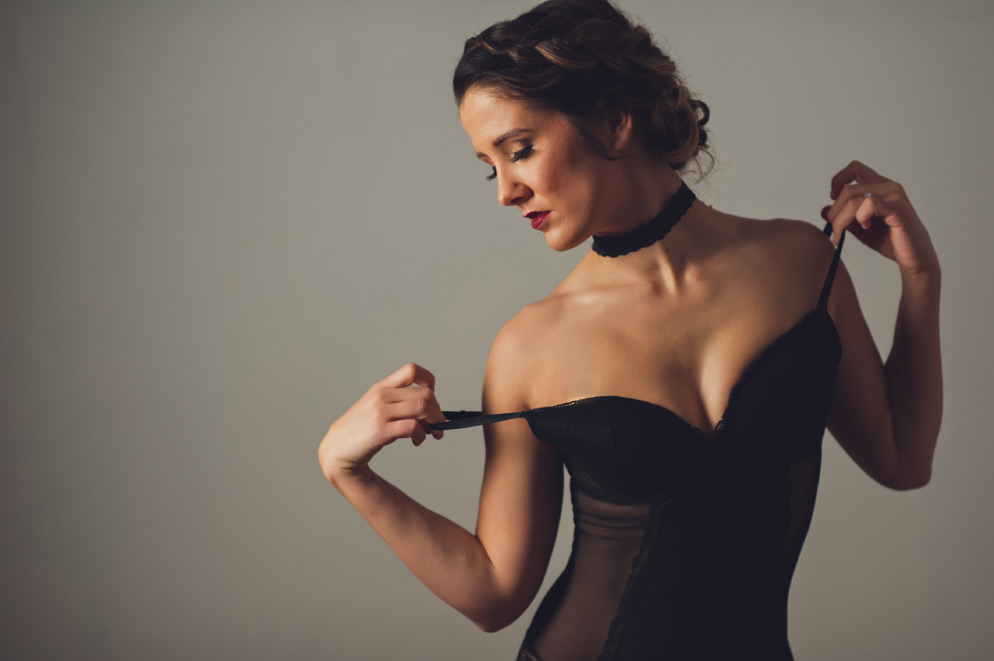Personal History: The Unexpected Power of Boudoir Photography
Jen Rozenbaum creates images a world away from the simple allure we might immediately associate with boudoir photography. She works in the realms of self: self discovery, self awareness, a sense of self and pride in oneself. Her boudoir photographs aim for no less than revealing women as who they really are, not what others want them to be or think they should be. Her goal is the empowerment of women, and she discovered in a time of personal crisis and doubt that her photographs could do more than flatter: they could strengthen—herself through the process of creating them, and her subjects through their awareness of their own self worth.
Jen always scouts an on-location house and is quick to take advantage of what the setting offers. D3S, AF-S NIKKOR 70-200mm f/2.8G ED VR II, 1/125 second, f/2.8, ISO 2500, manual exposure, Matrix metering.
Framing and the simple lifting of the fabric of the skirt her client's wearing in the previous photo gives this image a totally different look. D3S, AF-S NIKKOR 70-200mm f/2.8G ED VR II, 1/125 second, f/2.8, ISO 2500, manual exposure, Matrix metering.
At the Start
Jen came to photography as a way to observe the world and to see that there was happiness in it. She photographed a few weddings, took some family portraits and then, at a friend's invitation, helped out on a boudoir shoot. "She'd booked a session with two sisters," Jen says, "and she needed another photographer. Would I be interested? I had no idea what to expect, but I loved it, and I came home and said to my husband, 'I know what I want to be when I grow up.' I never shot anything else from that point on because I loved the way it made the women feel."
At first, the photography itself wasn't her main concern. "The pictures were secondary to the emotions that were going on, and I didn't worry about good or not good. it wasn't until a few years later [that] I started pushing myself [photographically]."
But even today Jen will tell you that being a photographer isn’t really her job. What she is, for herself and her clients, is what she terms "a photogratherapist."
"When I discovered boudoir, I thought, Wow, I'm not the only one who needs this," she says. "It became sort of an exchange of energy between me and the client. I was taking pictures, but I was even more involved, becoming a presence in their lives. I was sharing my story and they were sharing theirs."
She saw that boudoir photography was a way for women to celebrate their femininity and the way they see and choose to express themselves. "I'm photographing their strengths, and they're releasing their own personal power."
Same house, same subject, but a discovery in the basement brought Jen's idea of basketball boudoir to life. "For me this is an example of a woman being able to be feminine in an unexpected way—and to have fun with it," Jen says. The light effect comes from a gel over the lighting setup Westcott has branded the Solix 2-Light Kit by Jen Rozenbaum. D3S, AF-S NIKKOR 70-200mm f/2.8G ED VR II, 1/125 second, f/3.5, ISO 2000, manual exposure, Matrix metering.
Basketball boudoir continued, because when you find a setting like this, you use it. "I put images like this out there because a woman who does play basketball, or soccer, or whatever, will say, 'Hey, you know, I never thought I could do [boudoir] because I’m too sporty.' Well, yes, you can do it." D3S, AF-S NIKKOR 70-200mm f/2.8G ED VR II, 1/125 second, f/3.5, ISO 2000, manual exposure, Matrix metering.
The Trust Sessions
The boudoir shoots are as much about stories as they are about photography. "I talk to the women all the time," Jen says. "There's constant communication, and it's not just, Oh, I like your outfit. These are not superficial compliments—they're compliments about who they are."
This past year Jen was diagnosed with breast cancer, and she shares that fact with her clients. "My struggles, my own body issues—I talk about them online, on social media, and that allows for a certain trust. When clients come in they know they can trust me with their stories because they've heard mine, and the stories are shared in a safe place...a place without judgment."
She's said the boudoir stories are often stories of transformation and self-discovery. With the permission of her client, Jen relates the story of a woman who came in for boudoir photographs to celebrate a weight loss. The session turned into an emotional recounting of how the client worked for a boss who always put her down, who repeatedly told her how poor her work was. After the shoot, Jen's client put some framed photos from the session on her desk, and every time the boss degraded her, she would look at them and be reminded of her self-worth.
"She's a breast cancer survivor," Jen says, "and she was one of the shoots I did while I was undergoing treatment for breast cancer. I took this picture as part of her story to show that beauty comes in all shapes and sizes and isn't always what we expect it to look like." D3S, AF-S NIKKOR 70-200mm f/2.8G ED VR II, 1/125 second, f/2.8, ISO 2000, manual exposure, Matrix metering.
"This is in my studio, using light coming through blinds to play off the curves of her body. One thing you can see in most of my images is there's not much environmentally in them, so [they often] show how important posing and lighting are." D3S, AF-S NIKKOR 85mm f/1.4G, 1/1600 second, f/3.2, ISO 500, manual exposure, Matrix metering.
In and Out of the Studio
Jen divides her shooting between studio sessions and location work. She says a big advantage of the studio is knowing exactly what she can do with light and backgrounds. For example, there's a spot in the studio where she knows sunlight will stream through the windows during certain hours at certain times of the year, and she'll schedule sessions to take advantage of that light.
"But," she says, "the downside of the studio is that same thing—it's predictable, so I have to force myself to get creative." To do that, she'll use "plenty of artificial light" as well as the studio's beautiful natural light. "I have options—go with daylight and have a fast session, or go with creating whatever light I want."
Another way to avoid the predictable is to shoot on location in client's homes or even in the homes of her friends. "It makes me think more," she says.
"Without the shadows and the light you have nothing," Jen says. "No environmental factors here, only what the light and the subject are giving. But if you do it right, posing, light and shadows tell a story. I pose my subjects from head to toe, and do it all with communication, without ever having to touch them." D3S, AF-S NIKKOR 85mm f/1.4G, 1/125 second, f/2.5, ISO 1250, manual exposure, Matrix metering.
Jen doesn't have checklist of poses. Each client is posed for what makes her look best. "It's all about how she looks good and what she looks good in, and I believe that if she's not looking good, I'm not capturing her the right way—the camera doesn't add ten pounds; the photographer does. Between lighting, wardrobe, posing, lens choice and angles I can manipulate the results—but I'm not manipulating them to the point where they won't recognize themselves."
Jen wants each client to leave the session feeling good regardless of whether she's seen the pictures or not. "The pictures serve as a souvenir of the experience," she says. "When they look at the photos, they think, I remember how I felt that day. And that feeling empowers them again."
In the case of the woman with the terrible, berating boss, Jen's session did exactly that. "She said to me, 'I put some pictures on my desk so every time he yelled at me I'd remember.' And then she decided she didn't have to put up with that anymore, and she quit the job. Now she's doing the things she always wanted to do in life, knowing she's worthy of it all."
That might be the best story Jen can hear—one of realization, transformation and the power of a moment caught in a photograph.
It bears repeating: "I'm photographing their strengths, and they're releasing their own personal power."

